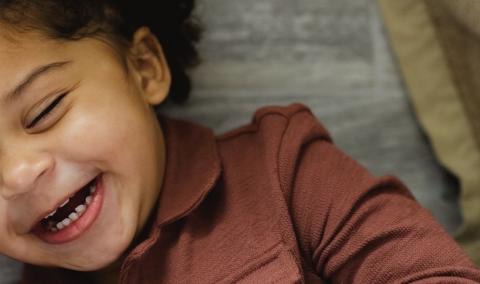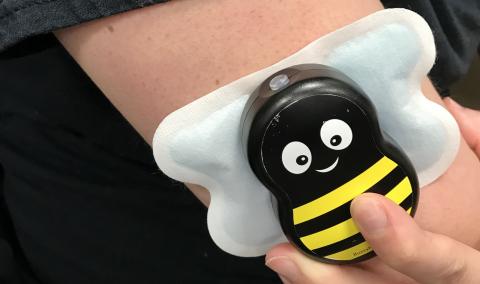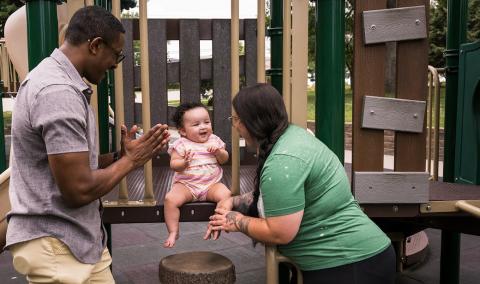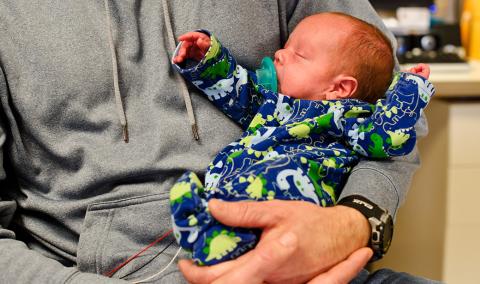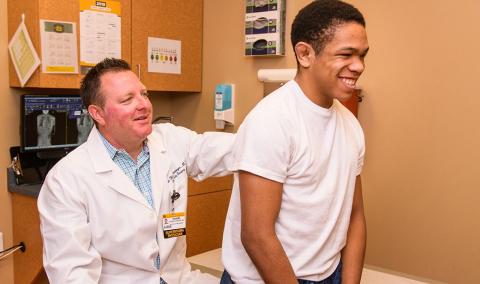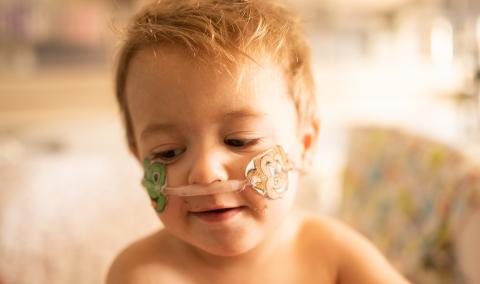Birthmarks or moles are pigmented lesions that may be congenital (present at birth) or acquired (appearing after birth). They may occur anywhere on the body. Some children get birthmarks and moles that are bothersome; others don’t even know they have them.
If your child has a birthmark or mole that needs treatment, the Children's Health team at Children’s Hospital can determine if they are harmless or if they may be a more serious medical condition.
Frequently asked questions about moles and birthmarks
Find answers to commonly asked questions about this condition.
Do birthmarks or moles cause my child any pain?
Usually, birthmarks and moles won’t cause your child any pain. However, some may become ulcerated or irritated, causing discomfort. These are typically removed surgically.
What causes birthmarks or moles?
Birthmarks and moles are caused by an overgrowth of specific types of skin cells. Heredity and sun exposure can play a role in their formation.
What are the main issues related to birthmarks or moles?
The primary issue with these skin conditions is whether it could become a skin cancer. Most birthmarks and moles are not worrisome and will never cause a problem. However, other types are more concerning and need to be evaluated.
Are there other problems that occur commonly with birthmarks or moles?
If your child has a birthmark or mole on his or her face or has a large, unsightly one on another part of the body, this can be a source of psychosocial stress. In those cases, you may decide to have the birthmark or mole removed for cosmetic reasons.
When giant congenital nevi (a dark-colored, often hairy, patch of skin) occurs on the head or over the spine, there is a small risk of neurocutaneous melanosis, or involvement of the central nervous system (brain and spinal cord) with melanoma (skin cancer). In addition, giant congenital nevi that involve the full circumference of an arm or leg can sometimes restrict the growth of the affected limb.
What is the treatment for babies and children with birthmarks or moles?
Birthmarks or moles can be observed with regular examinations or surgically excised. For small ones, surgical treatment can be done as a minor outpatient procedure. Giant congenital nevi may require multiple complex surgical procedures for excision, depending upon the size and location. If surgery is appropriate, our surgeons will design a surgical treatment plan specifically for your child after discussing all of the options with you.
Related Conditions & Treatments
- Adolescent Medicine
- Chest Wall Deformities
- Down Syndrome
- Emergency Care for Kids
- Gastrostomy and Feeding Access Program
- Hyperbaric Oxygen Therapy
- Juvenile Diabetes
- Neonatology
- Pediatric Anesthesiology
- Pediatric Cancer
- Pectus Carinatum
- Pectus Excavatum
- Pediatric Cardiology
- Pediatric Dermatology
- Pediatric Development and Behavior
- Pediatric ENT (Ear, Nose and Throat)
- Pediatric Epilepsy
- Pediatric Eye Care
- Pediatric Gastroenterology
- Pediatric Infectious Diseases
- Pediatric Inpatient Rehabilitation
- Pediatric Nephrology
- Pediatric Neurology
- Pediatric Neurosurgery
- Pediatric Orthopaedics
- Pediatric Plastic Surgery
- Pediatric Primary Care
- Pediatric Psychiatry
- Pediatric Pulmonary Medicine
- Pediatric Sleep Medicine
- Pediatric Surgery
- Pediatric Surgical Services
- Pediatric Urology
- Pediatric Vascular Anomalies
- Pediatric Weight Management
- Sickle Cell Disease
- Aerodigestive Program




